Dialogue in the Dark – Bukchon (어둠속의대화 북촌점)
5.0Km 2025-07-04
Gahoe-dong, Jongno-gu, Séoul (Corée du Sud)
Située près du palais Gyeongbokgung, Dialogue in the Dark – Bukchon est une exposition participative sensorielle unique qui se déroule dans l’obscurité totale pendant 100 minutes. Accompagnés par un·e Roadmaster, les participants explorent différents environnements uniquement à travers les sens du toucher, de l’ouïe, de l’odorat et du goût.
Créée en Allemagne en 1988, cette exposition internationale a été présentée dans plus de 161 villes à travers le monde, touchant plus de 12 millions de visiteurs en Europe, en Asie et en Amérique.
Les visiteurs doivent arriver 15 minutes avant l’heure de réservation pour retirer leurs billets, déposer leurs affaires personnelles et se préparer à l’expérience. L’entrée se fait à l’heure exacte via un ascenseur menant progressivement vers une obscurité complète. Pendant 100 minutes, aucune sortie n’est possible ; il est donc essentiel d’utiliser les toilettes à l’avance.
L’exposition est située à 700 m de la sortie 2 de la station de métro Anguk (ligne 3). Le quartier de Bukchon et ses environs, proches du palais Gyeongbokgung, offrent également de nombreux cafés et restaurants à découvrir avant ou après l’expérience.
Galerie Simon (갤러리 시몬)
5.1Km 2021-02-16
20, Jahamun-ro 6-gil, Jongno-gu, Seoul-si
+82-2-549-3031
Depuis son ouverture en avril 1994, la Galerie Simon a organisé exclusivement des expositions planifiées basées sur invitation. Il s’agit d’expositions de travaux d’artistes expérimentés ainsi que d’artistes en herbe.
Ground Seesaw Seochon (그라운드시소 서촌)
5.1Km 2023-01-16
18-8, Jahamun-ro 6-gil, Jongno-gu, Séoul
Le complexe culturel Ground Seesaw se trouve à Seochon dans l'arrondissement de Jongno-gu, un endroit où l'histoire, l'art et la culture se rencontrent. Le lieu a été créé par Media N Art, une société de production d'expositions, et conçu par le cabinet d'architecture SoA et l'entreprise paysagiste Loci Studio. Nous vous invitons à découvrir Ground Seesaw pour découvrir une variété d'expositions.
Musée d’histoire naturelle de Seodaemun (서대문자연사박물관)
5.1Km 2021-03-26
51, Yeonhui-ro 32-gil, Seodaemun-gu, Seoul
+82-2-330-8899
※ Fermeture temporaire en raison du Covid-19 (à partir du 7 février)
Le musée d’histoire naturelle Seodaemun est le premier musée d’histoire naturelle établi par une agence publique. Le musée offre aux enfants l’opportunité d’expérimenter et apprendre à propos de leur environnement et montrer comment préserver la beauté naturelle de la terre. Le musée d’histoire naturelle Seodaemun accueil des expositions toute l’année et offre plus de 100 programmes. C’est devenu une destination populaire pour les visites de terrain des jeunes, un espace culturel pour les résidents et un espace de loisir pour les familles. De nombreux pays asiatiques envoient même des représentants au musée pour apprendre de son succès.
Chaque étage du musée a son propre thème, ce qui est plus simple pour les visiteurs qui veulent retrouver leur chemin. Le premier étage est tourné autour du thème de « Magnifique Séoul, harmonie entre la nature et les hommes » et abrite une librairie d’histoire naturelle, un lounge dinosaure, une pièce de réalité virtuelle, un aquarium et un laboratoire virtuel. Le second étage (« l’origine et l’évolution de la vie et sa diversité ») montre les origines de la vie, le monde des dinosaures durant l’ère mésozoïque, l’origine des humains, une diversité de la terre et la vie marine et une variété d’espèces en danger. Au troisième étage, les visiteurs peuvent explorer le processus de création de la terre, qui finit par une exposition sur une représentation de la péninsule coréenne de nos jours. Au même étage, des expositions, très bien mises en valeur sont ouvertes sur les mystères du système solaire et explique des phénomènes naturels tels que les tremblements de terre, la création de grottes et les formations de rochers.
Musée mondial de la joaillerie (세계장신구박물관)
5.1Km 2024-12-12
2, Bukchon-ro 5na-gil, Jongno-gu, Seoul-si
+82-2-730-1610
Le musée mondial de la joaillerie se situe dans une ruelle du quartier Samcheong-dong, à l’est du palais Gyeongbokgung, où sont regroupés de nombreux musées et galeries d’art.
Le directeur du musée a collectionné environ 3 000 pièces dans une soixantaine de pays pendant 30 ans, et il en a exposé environ mille ici.Le rez-de-chaussée se compose d’un mur d’ambre reflétant les 5 000 ans de l’histoire de la Terre, de la Chambre Eldorado revêtue d’or qui a fasciné les européens du XVIème siècle, de la salle des colliers mettant en valeur les techniques somptueuses, de la salle du crucifix qui crée une atmosphère paisible et calme.
Au premier étage se trouvent le mur de bagues et celui de masques qui vous inviteront à la méditation, la salle d’ivoire et de perles agencée de manière à découvrir la beauté de l’art de la décoration intérieure, et la salle dédiée aux parures modernes.
Musée de la Broderie Hansangsu (한상수 자수박물관)
5.1Km 2024-12-18
29-1, Bukchon-ro 12-gil, Jongno-gu, Seoul-si
+82-2-744-1545
Le musée, qui est situé dans Bukchon Hanok Village Gahoe-dong à Séoul, a sur les reliques d'exposition de broderie et de travaux liés à des Han Sang-soo, qui a été nommé culturel immatériel Asset n ° 80. Le musée a été créé pour promouvoir l'œuvre de broderie de Corée, de préserver les techniques traditionnelles, et encourager de nouvelles créations.
Les visiteurs peuvent voir l'exposition permanente et les expositions spéciales, et de prendre part régulièrement à des mains sur les programmes de broderie pour une somme de 3.000 gagné. Le programme fonctionne 10 heures-17 heures et ne nécessite pas une réserve. Le programme d'une heure débute avec une démonstration par un instructeur, après quoi les participants broder un mouchoir en suivant les instructions. Le mouchoir est à prendre à la maison après le programme est terminé. Des instructions sont données uniquement en coréen, tant d'étrangers sont invités à venir avec un guide local.
Palais Gyeongbokgung (경복궁)
5.1Km 2025-09-19
161, Sajik-ro, Jongno-gu, Seoul
+82-2-3700-3900
Yi Seong-gye (1335-1408), le fondateur de la dynastie Joseon, déplaça la capitale à Hanyang (l’ancien nom de Séoul) et construisit Gyeongbokgung, le premier palace de la dynastie. Terminé en 1395, Gyeongbokgung fut le premier palais royal où le roi non seulement résidait mais aussi dirigeait le pays. Edifié sur les principes du feng shui de l’époque, le site choisi était entouré des montagnes Bugaksan, Namsan, Inwangsan et Naksan. Le palais est exposé au sud pour bénéficier de la plus longue exposition au soleil avec les montagnes derrière qui bloquent les vents froids du Nord.
En tant que palais royal, son architecture représente ce qui se faisait de mieux à l’époque. La porte Gwanghwamun, la porte Heungnyemun et le hall du trône Geunjeongjeon furent construit dans un style grandiose pour représenter la dignité et l’honneur de la nation.
La palais Gyeongbokgung possède de nombreux atouts culturels : ses murs en pierre, ses toits et ses statues Haetae reflètent le degré d’avancement architectural de la dynastie Joseon. Le pavillon Gyeonghoeru (où se tenaient des banquets pour les délégations étrangères et pour le roi et ses dignitaires) et le bassin Hyangwonjeong (un endroit pour la détente) sont considérés comme les plus beaux exemples du genre en Corée.
Ne manquez pas de visiter le Musée national folklorique situé à proximité après votre visite du palais (entrée gratuite).
Festival de la culture royale (궁중문화축전)
5.1Km 2025-09-03
161, Sajik-ro, Jongno-gu, Seoul
+82-2-3210-4684
Le festival de la culture royale a lieu dans les 5 palais du pays et dans le sanctuaire de Jongmyo. Organisé depuis 2014 entre la fin avril et le début du mois de mai, les visiteurs ont ici l'occasion d'apprécier des programmes originaux en rapport avec la culture traditionnelle et royale de Corée dans les différents palais de Séoul tout en profitant du temps clément du printemps. Le festival est désormais organisé deux fois par an, au printemps et en automne.
Musée d'art Daelim (대림미술관)
5.1Km 2025-04-18
35-1 Tongui-dong Jongno-gu Seoul-si
+82-2-720-0667
Le Musée d'art Daelim, fondé par le Groupe Daelim, fut d’abord établit à Daejeon en 1996 et fut deplacé plus tard à Jongno (Séoul), en 2002. Cette galerie d’art étudie, analyse et présente l’art moderne à travers la photographie et organise des expositions centrées sur le média photo.
Le musée d'art est situé dans la zone résidentielle de Tongui-dong, près du Palais de Gyeongbokgung. Elaboré par un architecte français, Vincent Cornu, et construit par l’entreprise Daelim, il a ouvert ses portes en mai 2002.
Au rez-de-chaussée se trouvent un jardin, un parking, une réception, un espace de rangement, et une salle de conférence. Au premier et au deuxième se trouvent les bureaux ainsi qu’une salle d’expositions de 595m² consistant en une petite et une grande salle, une longue galerie ainsi qu’un espace possédant un haut plafond. Au troisième étage vous trouverez une salle pour les séminaires pouvant accueillir 120 personnes ainsi qu’un balcon avec une très jolie vue d’où vous pourrez admirer les monts Inwangsan et Bukhansan. Les panneaux en verre teinté (créés afin de refléter la beauté des tissus traditionnels coréens) et les pittoresques salons au premier et au deuxième ajoutent à l’ensemble un certain charme.
Par-dessus tout, le musée fut élaboré en considérant les photos, lesquelles sont très sensibles à l’humidité, la lumière et la température.
Dongnimmun (Arc d'indépendance) (독립문)
5.1Km 2022-12-15
251, Tongil-ro, Seodaemun-gu, Seoul
Dongnimmun se trouve sur un site autrefois connu sous le nom de Yeongeun, où étaient reçus les envoyés. Lors de la visite d'un envoyé chinois, le roi passait par cette porte pour le saluer. Dongnimmun fut bâtie en 1897, afin de proclamer l'indépendance de la Corée vis-à-vis du Japon, de la Russie et de la Chine, qui ont influencé et menacé la Corée depuis longtemps.
La construction a été financée par les dons des citoyens coréens. Les traces du passé sont toujours visibles à Dongnimmun. Les deux piliers devant Dongnimmun sont des vestiges de Yeongeungmun.
La forme de Dongnimmun évoque celle de l'Arc de Triomphe en France. Dongnimmun a été construite au moyen d'un mur de granit, avec un passage de 14,28 m de haut. L'inscription "Dongnimmun" en coréen se trouve en haut du fronton, entourée des deux côtés par le drapeau coréen. Un escalier situé sur la partie intérieure gauche permet d'accéder à la partie supérieure. Des fleurs nationales Mugunghwa sont plantées tout autour de la porte. A présent, des routes passent tout autour, et la porte attire le regard de tous les passants.
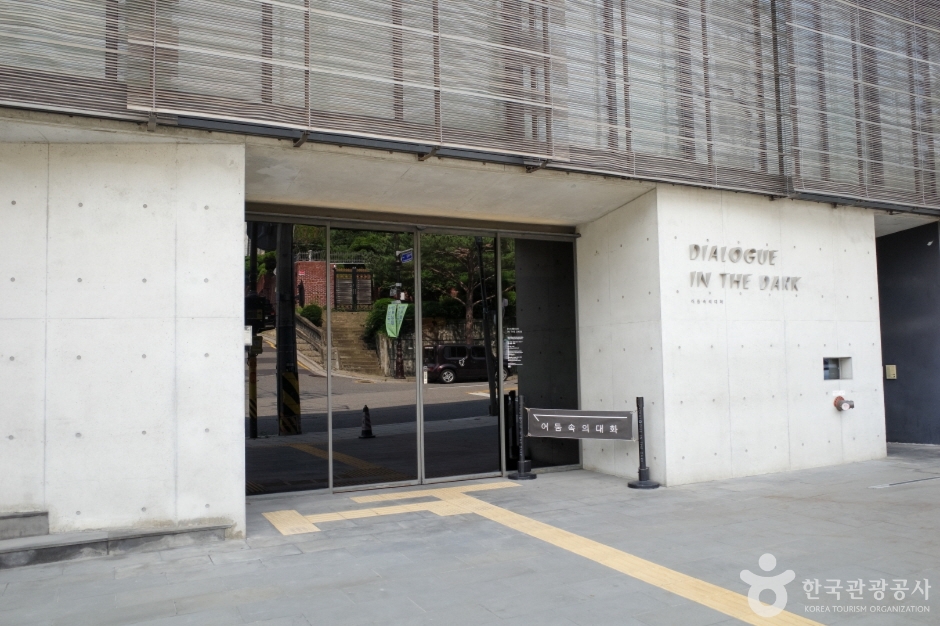
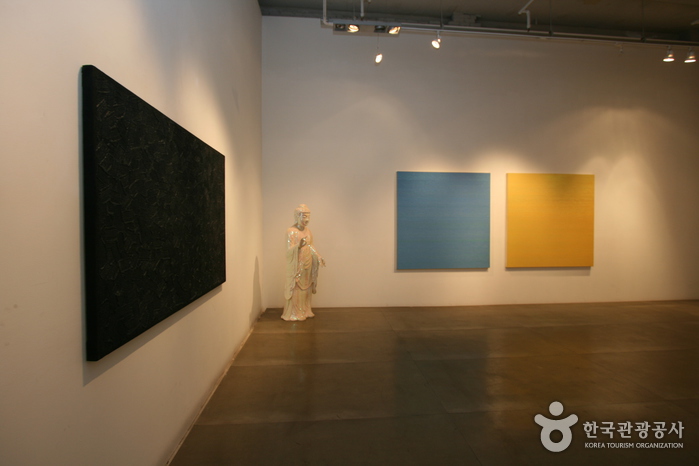

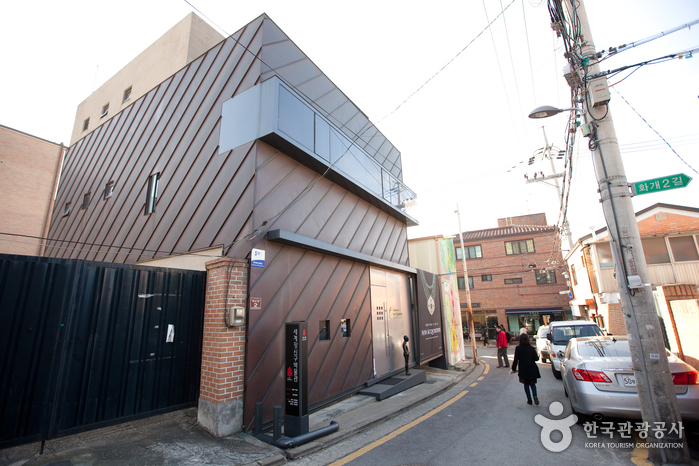
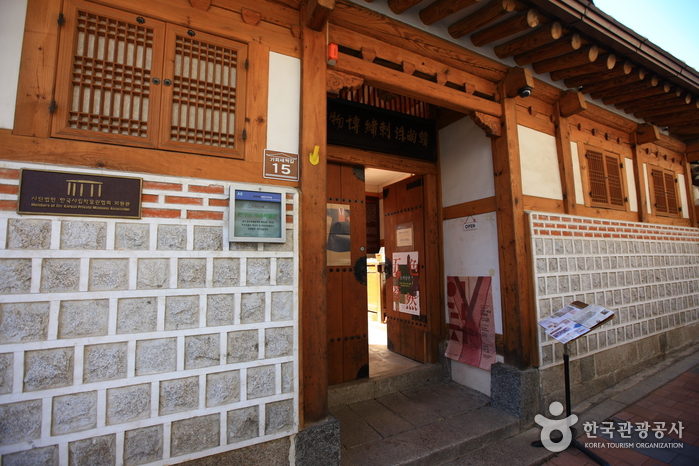
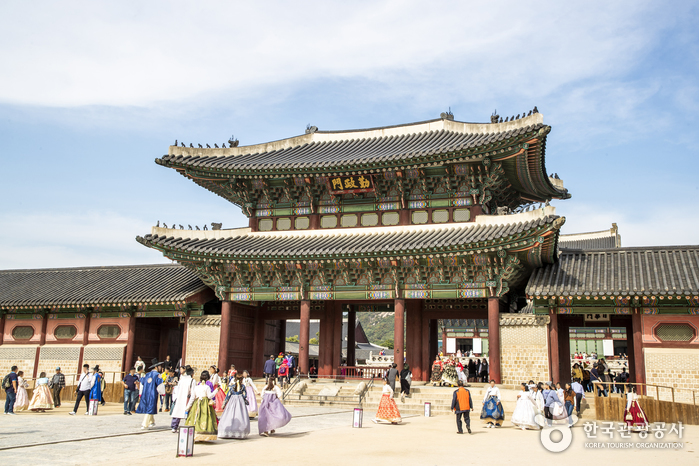
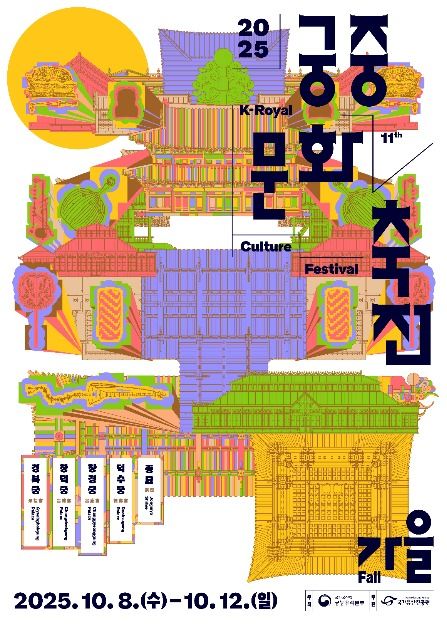
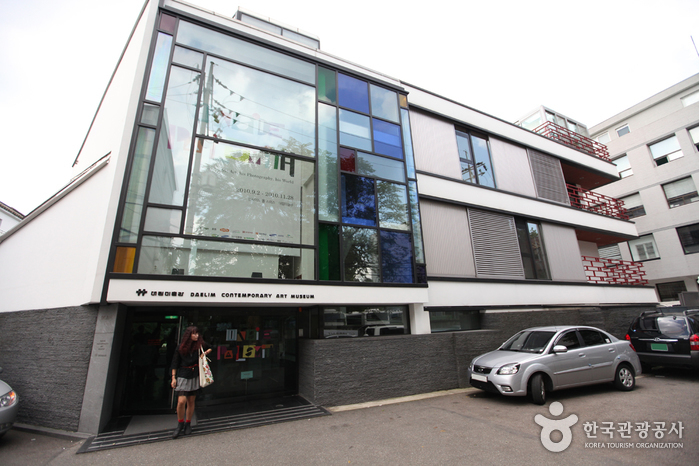
 Français
Français
 한국어
한국어 English
English 日本語
日本語 中文(简体)
中文(简体) Deutsch
Deutsch Español
Español Русский
Русский